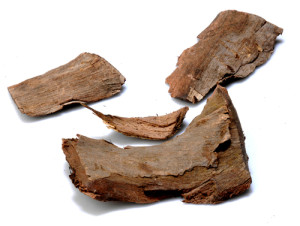Contents
Benefits
- In traditional Ayurvedic medicine, Arjuna bark has been used to balance the three “humors”: kapha, pitta, and vata. It has also been used for asthma, bile duct disorders, scorpion stings, and poisonings.
- The bark of Arjuna bark has been used in India for more than 3000 years, primarily as a heart remedy. An Indian physician named Vagbhata has been credited as the first to use this product for heart conditions in the seventh century A.D. Research on terminalia has been going on since the 1930s, but studies have provided mixed results. Its role, if any, in heart disease still remains uncertain.
- Nevertheless, people today use Arjuna bark for disorders of the heart and blood vessels (cardiovascular disease), including heart disease and related chest pain, high blood pressure, and high cholesterol. It is also used as “a water pill,” and for earaches, dysentery, sexually transmitted diseases (STDs), diseases of the urinary tract, and to increase sexual desire.
- Terminalia bellerica and Terminalia chebula are both used for high cholesterol and digestive disorders, including both diarrhea and constipation, and indigestion. They have also been used for HIV infection.
- Terminalia bellerica is used to protect the liver and to treat respiratory conditions, including respiratory tract infections, cough, and sore throat.
- Terminalia chebula is used for dysentery.
- Terminalia bellerica and Terminalia chebula are used as a lotion for sore eyes.
- Terminalia chebula is also used topically as a mouthwash and gargle.
- Intravaginally, Terminalia chebula is used as a douche for treating vaginal infections.
- In traditional Ayurvedic medicine, Terminalia bellerica has been used as a “health-harmonizer” in combination with Terminalia chebula and Emblica officinalis. This combination is also used to lower cholesterol and to prevent death of heart tissue.
Cautions
Special Precautions & Warnings:
Pregnancy: There is some evidence that Arjuna bark is POSSIBLY UNSAFE during pregnancy. The safety of the other two species during pregnancy is unknown. It’s best to avoid using any terminalia species.
Breast-feeding: There is not enough reliable information about the safety of Arjuna bark if you are breast-feeding. Stay on the safe side and avoid use.
Diabetes: Arjuna bark might lower blood sugar levels. Your diabetes medications might need to be adjusted by your healthcare provider.
Surgery: Arjuna bark might decrease blood sugar levels and interfere with blood sugar control during surgery. Stop taking Arjuna bark at least 2 weeks before a scheduled surgery.
Interactions
None are recorded.
Other names
Amandier Indien, Amandier Tropical, Arjan des Indes, Arjuna, Axjun Argun, Badamier, Badamier Géant, Baheda, Bahera, Bala Harade, Balera, Behada, Beleric Myrobalan, Belleric Myrobalan, Belliric Myrobalan, Bhibitaki, Bibhitak, Bibitaki, Carambole Marron, Chebulic Myrobalan, Hara, Harad, Harada, Haritaki, He Zi, Hirala, Indian Almond, Kalidruma, Karshaphala, Myrobalan, Myrobolan Bellirique, Myrobolan Chébule, Terminalia arjuna, Terminalia bellirica, Terminalia chebula, Terminalia chebulic, Tropical Almond, Vibhitaki
References
Source: WebMD, http://www.webmd.com/vitamins-supplements/ingredientmono-811-terminalia.aspx?activeingredientid=811&activeingredientname=terminalia

